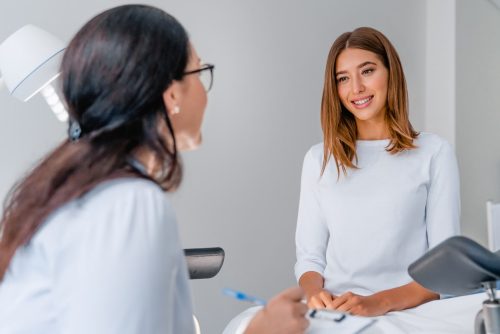Endometriosis is a common disorder. According to the Office on Women’s Health, it affects an estimated 1 in 10 women between the ages of 15 and 44. Although endometriosis can be painful, one can manage it with the proper diagnosis and treatment. So if you think you have endometriosis, here’s how to get an appropriate diagnosis.
Table of contents
Seek Out a Medical Professional
The first step in getting an endometriosis diagnosis is to seek help from a medical professional. If you already have one, start by discussing your symptoms with them, mention the word endometriosis, and ask for their advice on how to proceed. It’s important to note that endometriosis can manifest itself in different ways depending on the individual, so it’s essential to talk about all of your symptoms with your doctor or gynecologist.
Get Tested
After speaking with your doctor or gynecologist, they may recommend getting tested for endometriosis. The most common diagnostic tests are ultrasound imaging and laparoscopy (a minimally invasive surgical procedure). Ultrasound imaging uses sound waves to create images of internal organs and tissues, which can help identify abnormalities associated with endometriosis. But ultrasound can still miss some endometriosis lesions. So if the ultrasound results came negative, there is still a chance you have endometriosis. Laparoscopy involves surgically inserting a thin tube (called a laparoscope) into the abdomen through small incisions. Then surgeons look inside the abdominal cavity for any signs of endometriosis. The surgeon typically takes several biopsies to send for histopathology to confirm endometriosis. Histopathology is the gold standard of diagnosis for endometriosis.
Follow Up Care
Once you receive your positive test results, you must follow up with your doctor or gynecologist for further care and advice on managing your symptoms, such as pain, bloating, fatigue, and infertility. Depending on the severity of the condition, your doctor may recommend lifestyle changes such as diet modifications or exercise regimens, as well as hormonal therapies or medications such as birth control pills or anti-inflammatory drugs. The ultimate treatment for endometriosis is excision surgery, removing the endometriosis lesions from your body. Many experts consider excision surgery the gold standard of treatment for endometriosis. This excision surgery needs an experienced and skilled surgeon to deliver the desired results.
After speaking with your doctor or gynecologist about any possible signs of endometriosis, they may recommend ultrasound imaging or laparoscopic surgery to confirm and properly diagnose it. Once diagnosed, following up with them for additional care is essential to ensure proper management of symptoms and reduce pain levels associated with this disorder. With the right treatment plan, living with endometriosis doesn’t have to be difficult–so don’t hesitate; seek out help today!




